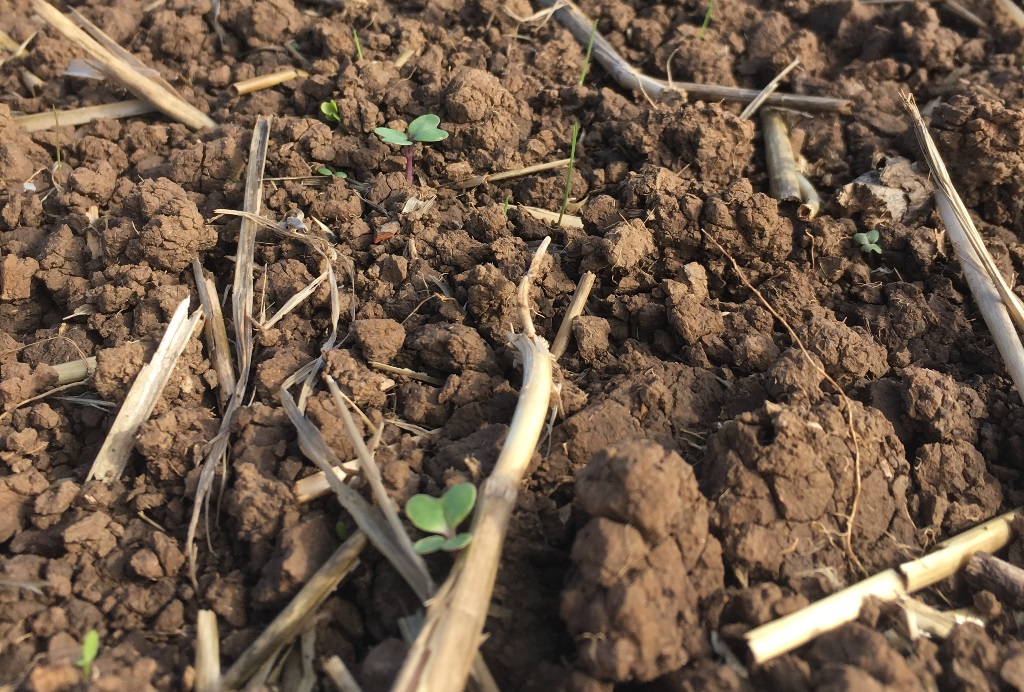 Establishing oilseed rape on our heavy land has always been a bit speculative. The risk from slugs, pigeons and CSFB are bad enough but drought is still the biggest spoiler.
Establishing oilseed rape on our heavy land has always been a bit speculative. The risk from slugs, pigeons and CSFB are bad enough but drought is still the biggest spoiler.
With little or no rain here through August and September, the seeds we put in laid in dust for weeks on end and only sprung into life as October approached. And now I have one of those classic ‘first loss, best loss’ conundrums. I’ve never persisted with Oct-emerged OSR before so I’m jumping into the unknown – the unknown being how benign the autumn will be to encourage enough vegetative growth to get critical mass.
Plan B is to have done with it and drill beans. But here’s the problem. This time last year the price differential between OSR and beans was less than £100 but today it’s approaching £200. With OSR and beans yielding much the same on this farm, this widening gap in price is making me see pound notes as I get to my knees to count how many pin-prick cotyledons I’ve got.
The dilemma now is to decide what to spend to keep the crop in the game for at least another few weeks. Every penny I spend on slug pellets and autumnal nitrogen will be completely wasted if at the end of the day my nerve fails and I order up the bean seed. Then there’s the aerial threat of the wood-pigeon blitzkrieg that always seems to amass on this farm in late Sept like newly arrived Thomas Cook customers with no apparent idea how to get back to wherever they came from. And with the plants smaller than a beak full, their complete wipe out is always just one random peck away.
On a brighter note it is a Clearfield variety so I don’t need to commit to a herbicide regime until I’m confident I’ve got a viable crop. Even more encouraging is the fact I’ve got the seed on a risk-share deal where if I end up with little or no yield then someone else shares that loss with me. With my poor record on establishing OSR I’m drawn to these insurance-style seed-pricing deals but I wonder I might get a reputation akin to the arsonist pub owner who rings up the insurance company to explain yet again the chip fryer caught alight causing seven figure sums worth of damage.

With this being the size of the OSR crop in the first week of Oct, no matter what the current rapeseed price, what are the odds on this crop making a margin?
The other thing that’s bugging this decision-making process as to whether to persevere with this crop born worryingly overdue is those little buggers of the flea beetle variety. I have heard theories that flea beetle have stopped migrating by Oct so their activity shortens as autumn draws in leaving the crop increasingly unmolested. When I hear of these theories my curmudgeonly mind is to ask why then don’t we just drill the bloody stuff in Oct. One suspects the later drilling solution to CSFB is not that simple.
If the crop doesn’t make it then it’s yet another step away from growing OSR on this farm. I’m conscious I’m not alone here with UK rapeseed production falling roughly 10% a year over the past five years. If the word I hear on the grapevine is right, it could be 20% next year not just 10%. I remember in the thick of the neonic debate four to five years ago, the NFU predicted exactly this would happen meaning less pollen for bees and more imports of oilseeds grown with neonics. At the time we were dismissed by the anti-pesticide lobby as chemical junkies crying wolf. Well guess what? The bloody wolf turned up.
Guy Smith grows 500ha of combinable crops on the north east Essex coast. @EssexPeasant




